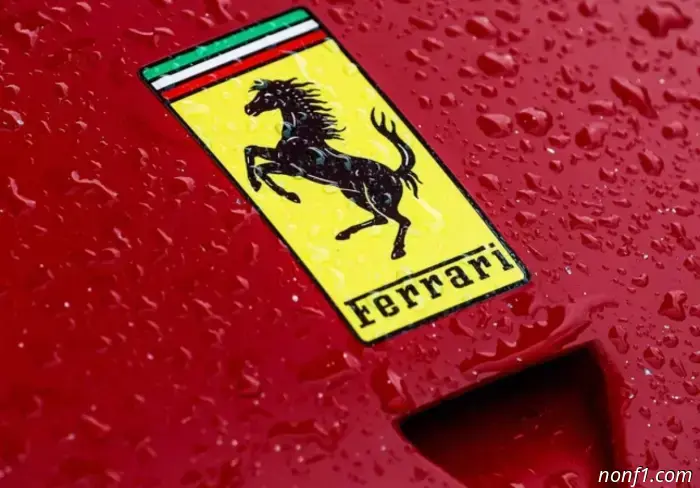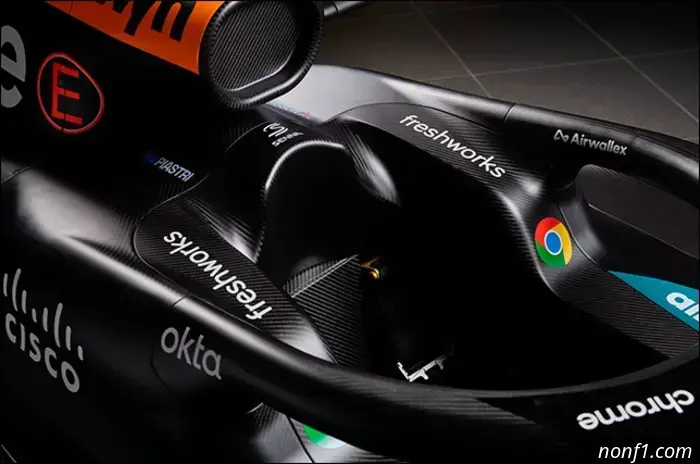
What to expect from the upgraded SF-25 rear suspension
In Belgium, Ferrari will introduce an upgraded rear suspension, which the team tested last week at Mugello during an officially permitted filming day.
Technical experts from the championship's official website analyzed the available information about this innovation and their conclusions are as follows.
The only external difference between the new suspension assembly and the previous version is that the front mounting point of the upper triangular arm has now been shifted a few centimeters lower. This change was made following the example of Mercedes and McLaren, who took similar steps earlier in the season.
The main idea is, combined with the front suspension, which geometrically prevents the car's body from "kissing" the track surface in the longitudinal plane, to increase resistance to chassis position changes relative to the track surface during acceleration and braking. If successful, this would enhance the aerodynamic stability of the platform.
If the differences in ground clearance at low and high speeds become smaller, the system preventing the aforementioned "kissing" allows for configuring the chassis for a lower ride height.
This, in turn, enables achieving higher and more stable downforce across a broader range of speeds, especially noticeable on slow sections of the track where the distance between the diffuser and the asphalt is maximized and airflow velocity is minimal.
Maintaining a relatively low ride height allows the car's floor to continue generating sufficient downforce.
Lower positioning of the front arm of the rear suspension's lower "triangle" results in a more noticeable effect that prevents an increase in ride height.
However, adjusting virtually any parameter of the racing car not only brings positive changes but also inevitably entails certain negative consequences. One possible downside of switching to such a suspension design could be a reduction in the sharpness and feeling that the driver experiences at the wheel, which is vital for perceiving all the nuances of the car's behavior.
Another potential risk factor is that at small ground clearances, there is an increased likelihood of excessive wear on the underbody control plank. To prevent this, Ferrari probably had to make changes to the shock absorber system as well, but these are mere assumptions, since these suspension parts are hidden beneath body panels.
The system, based on three spring dampers, controls changes in ground clearance height during load application. Ideally, a more powerful system should allow maintaining the required ground clearance while accounting for permissible wear of the control plank.
Presumably, the original shock absorber system was insufficiently effective and didn't consistently handle this task at the set ride height.
The combination of the new floor, introduced in Austria, and the upgraded suspension could allow Charles Leclerc and Lewis Hamilton to fully realize the potential of the SF-25, but this is theoretical. How much the team will succeed in practice will be revealed in the second half of the season.

Other articles
 Formula 1 took a step towards Net Zero status in 2030
Formula 1 confirms improvements in CO2 emissions and other greenhouse gas metrics...
Formula 1 took a step towards Net Zero status in 2030
Formula 1 confirms improvements in CO2 emissions and other greenhouse gas metrics...
 Jack Crawford sees progress in the work on the 2026 chassis.
Jack Crawford is a participant in the Aston Martin youth program, and his responsibilities include working on a simulator where he tests the virtual model of the 2026 car...
Jack Crawford sees progress in the work on the 2026 chassis.
Jack Crawford is a participant in the Aston Martin youth program, and his responsibilities include working on a simulator where he tests the virtual model of the 2026 car...
 The Formula 1 Commission met in London.
On July 22, the third meeting of the Formula 1 Commission for the current year took place at the FOM office in London.
The Formula 1 Commission met in London.
On July 22, the third meeting of the Formula 1 Commission for the current year took place at the FOM office in London.
 Freshworks – McLaren Racing's new partner
McLaren Racing announced a multi-year partnership with Freshworks, a provider of cloud software...
Carlos Sainz: The Spa race is always a challenge
The second quarter of the season was unsuccessful for Williams, but the team hopes to make up for it...
Freshworks – McLaren Racing's new partner
McLaren Racing announced a multi-year partnership with Freshworks, a provider of cloud software...
Carlos Sainz: The Spa race is always a challenge
The second quarter of the season was unsuccessful for Williams, but the team hopes to make up for it...
What to expect from the upgraded SF-25 rear suspension
In Belgium, Ferrari will showcase the upgraded rear suspension, which the team tested at Mugello last week...
